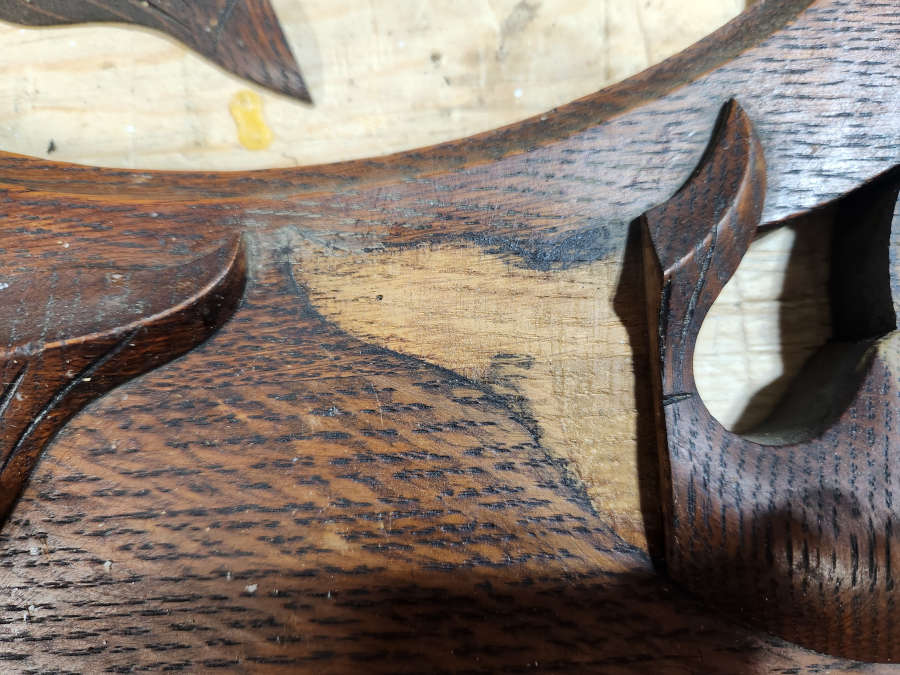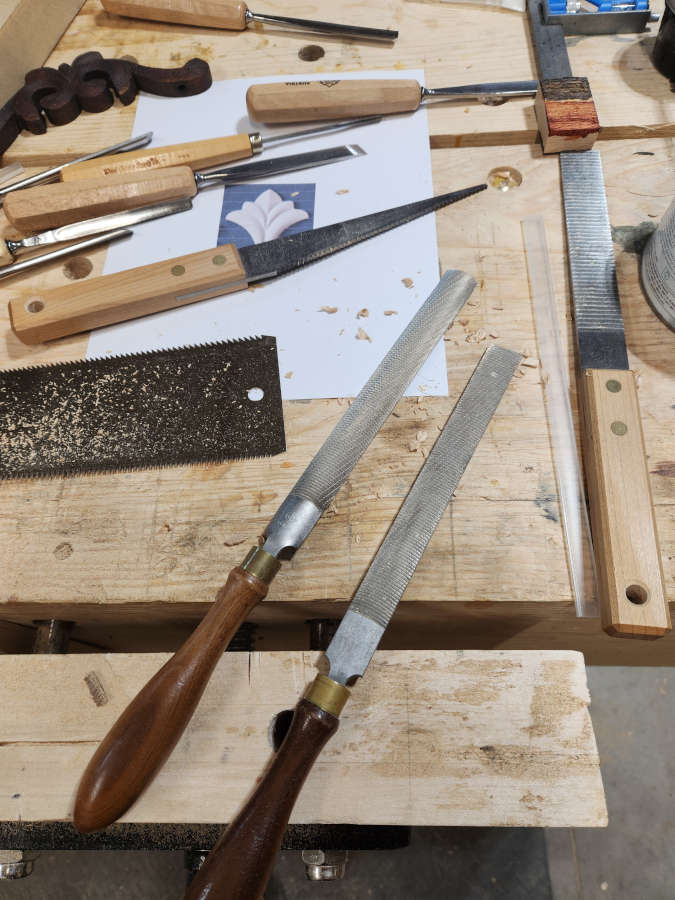Sometimes you reach a point where you feel you’ve lost all forward momentum and are stagnating. You might have a half dozen (or more) projects staring you in the face but you can’t seem to make any progress. You blame distractions, your day job, the home remodel, and any number of other possible excuses, but really you’ve hit one of your valleys.
In my case, I needed a quick win. A little project that I could get finished relatively quickly so I could then use that dopamine rush to carry me through to the rest of my projects.
And this small bookshelf was the perfect project for that.




I started by taking it all apart, which was pretty quick and easy. There were screws holding the piece together and then dowels that ran along the sides. The dowels slid out quite easily, and then the legs/stiles unscrewed from the shelves.


Once I had it apart I stripped each piece. I don’t normally strip a piece I’m working on because you lose the color and patina that many people look for in antiques. In this case, I decided to strip it because the majority of the surfaces were in bad shape and had already lost their patina and color.
I then assessed the pieces and decided that every surface needed to be sanded to get past the damage. And again, I normally don’t sand a piece I’m restoring but in this case it was already so far gone that sanding was necessary. And I’m glad I did because as I got past all of the damage and discoloration I reached some beautiful grain.
After stripping and sanding I cleaned everything with alcohol and instead of shellac, I used pure tung oil with citrus solvent. Normally I’ll use shellac, and then wax to match the color of the repaired parts and sections to the original. In this case, there was no original surface remaining so I went with

***Edit. This is the second version of this post because I had to restore the website from a backup and lost the 2nd half of this post.
I was going to keep this piece in the shop for a bit longer because there is some color variation that I could even out with a couple coats of dark wax, but I needed this project as a quick win. I needed it for the dopamine rush that I can use to continue on with my other projects. Plus we really needed a bookshelf for all of our cookbooks.





My next post will probably be on the small elm stand.














































